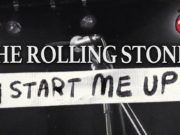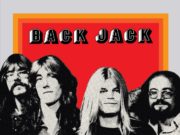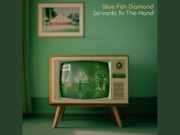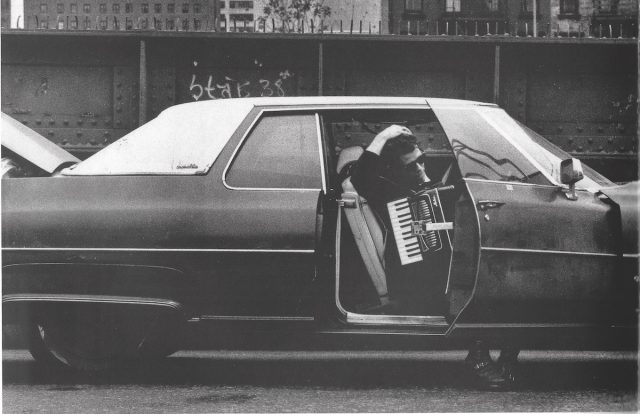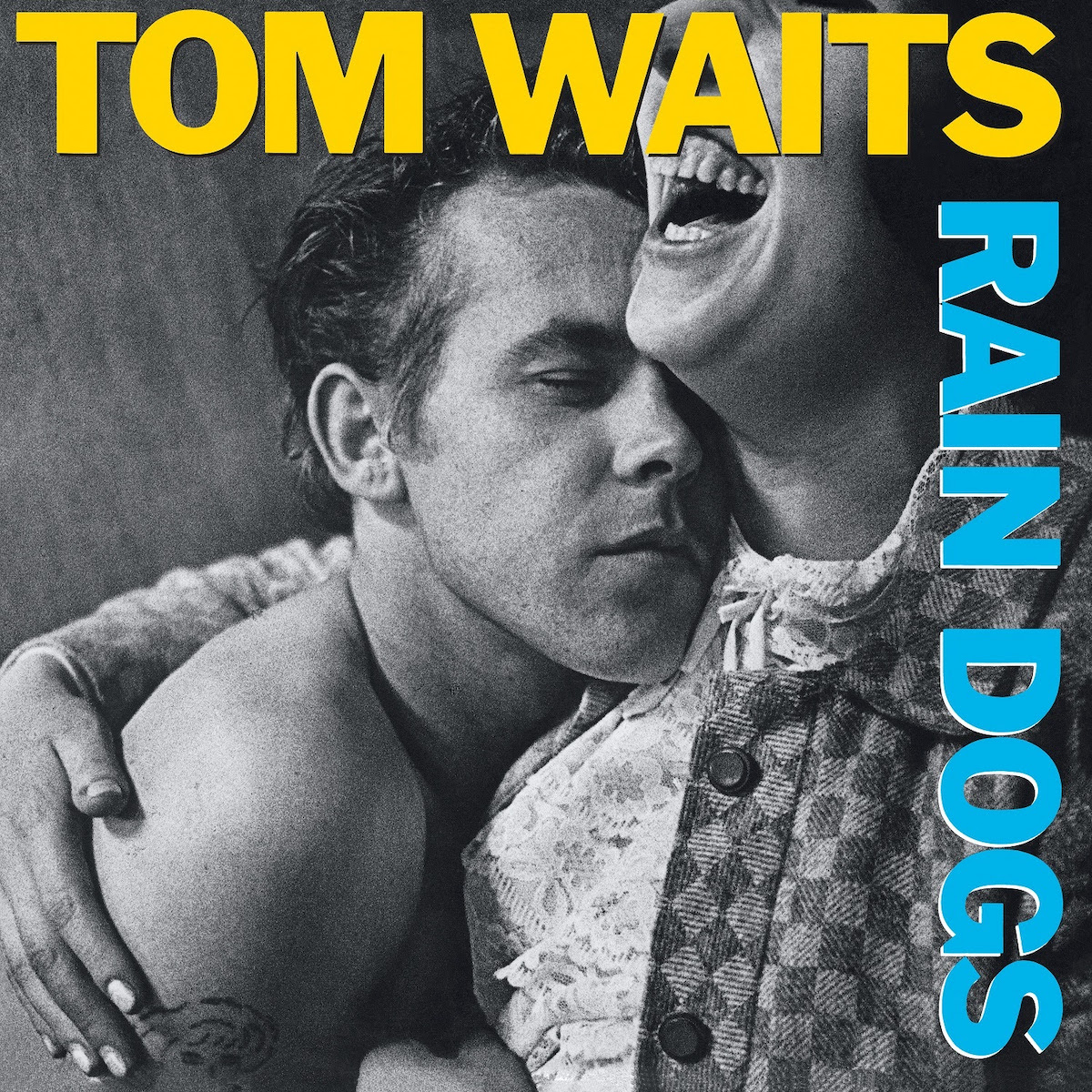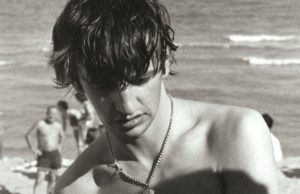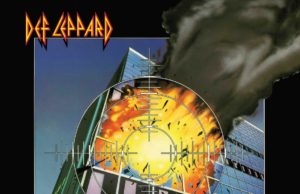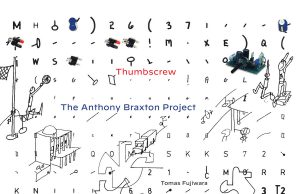THE EDITED PRESS RELEASE: “Personally overseen by Tom Waits and Kathleen Brennan, Waits’ spectacular middle-period albums — all released on Island Records between 1983 and 1993 — have been newly remastered from the original tapes. They’re all steaming now, with new vinyl reissues due in the fall.
Waits’ transformative creative breakthrough, Swordfishtrombones (1983), its sprawling and superb sequel Rain Dogs (1985), and the trilogy-completing, tragi-comic stage musical Franks Wild Years (1987) will return on vinyl on Sept. 1, 40 years to the day that Swordfishtrombones was released into the wild, ushering in a new and critically acclaimed musical era for Waits and his longtime songwriting and production partner Brennan. The epic song cycle Bone Machine (1992) and the underappreciated musical fable The Black Rider (1993), a collaboration with Robert Wilson and William S. Burroughs, will follow on Oct. 6. September also marks the 30th anniversary of The Black Rider.
All albums were mastered by Chris Bellman at Bernie Grundman Mastering under the guidance of Waits’ longtime audio engineer Karl Derfler. Swordfishtrombones was sourced from the original EQ’ed ½” production master tapes while Rain Dogs, Franks Wild Years, Bone Machine and The Black Rider were sourced from the original ½” flat master tapes. Bellman meticulously transferred the tapes and then remastered the audio in high resolution 192 kHz/24-bit. The lacquers for all titles were cut by Alex Abrash at AA Mastering. The new vinyl editions will come with specially made labels featuring photos of Waits from each era in addition to artwork and packaging that has been painstakingly recreated to replicate the original LPs, which have been out of print since their initial release. Surprisingly, The Black Rider and Bone Machine were never released on vinyl outside of Europe and will be making their vinyl debut in most of the world.
These critically acclaimed works are a monument to an artist’s ability to break through into new creative territory. Waits went from ’70s-era “bluesy, boozy” wordsmith and melodist with seven albums behind him to sound sculptor, miner of the subconscious, abstract orchestrator, sonic cubist — while retaining his innate lyricism, melodic invention, humanity. A rough analogy: Picasso switching from exquisite literal depictions to pouring his brain and id out onto canvas. Waits was still painting, in other words, but the frames were made of blood and bone and feathers and old carburetors.
Working with experimental composer Francis Thumm, and taking inspiration from the music of found-object composer Harry Partch — plus Waits’ friend Captain Beefheart — the renowned singer-songwriter reinvented his sound, album by album. As he put it in a 1983 interview: “I tried to listen to the noise in my head and invent some junkyard orchestral deviation — a mutant apparatus to drive this noise into a wreck collection.”
Not that Waits’ early albums were devoid of artistic progression. There were the piano-based jazz-folk ballads of his remarkable debut Closing Time (just remastered for its 50th anniversary), the beat/jazzy/smokey flavor of Nighthawks At The Diner, the piano-bass-sax-drums sagas of the landmark, Small Change, the experimental tone poem Burma Shave on Foreign Affairs, the grit and grunge of the stripped-down Heart Attack And Vine… All this would stand alone as a great body of work if the man had never written another note. But with Swordfishtrombones and the albums that followed, Waits shifted gears, or rather, deliberately ground them. The albums:
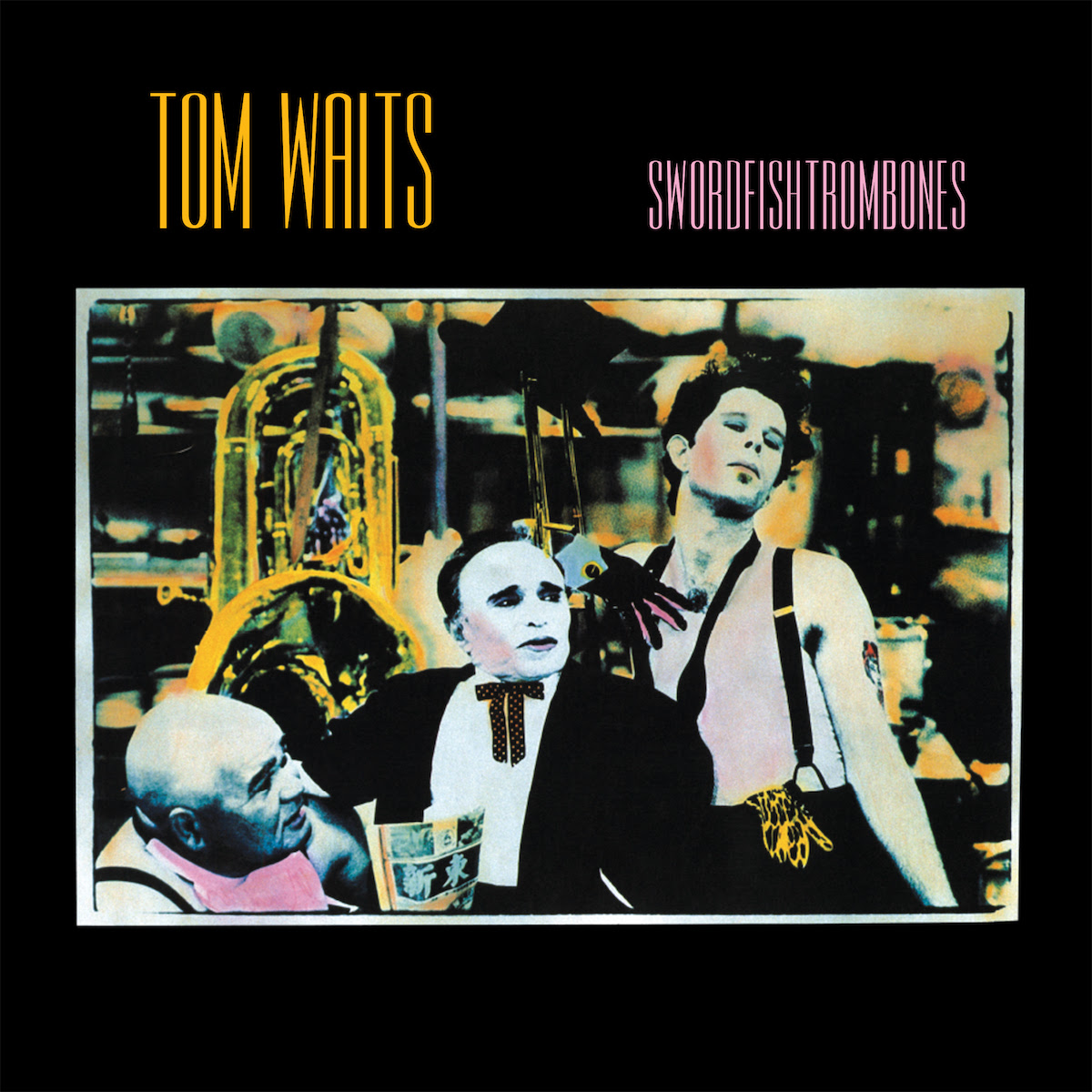
Swordfishtrombones
Swordfishtrombones (the title a winking tribute to Beefheart’s magnum opus, Trout Mask Replica) was a Waits-arranged pastiche, a variety of atmospheres from different sound planets. There is the warped, marching-army-ants music of Underground, an impressionist chant about people living below cities, but there was also the poignancy of the spare piano ballad, Soldier’s Things, the good bar yarn, Franks Wild Years (pre-figuring the musical of the same name), the tender, minimalist paean to Waits’ wife and muse, Kathleen, Johnsburg, Illinois, and the raggedy anthem to neighborhood chaos, In the Neighborhood. The 14 tracks were an embarrassment of inventive riches, and also a shocker — especially to his long-standing record label, Elektra-Asylum, which … rejected the album.
Correct: Elektra-Asylum gave a thumbs-down to an artist with a dedicated international following, seven venerated LPs, and a 1982 Academy Award nomination for the Tin Pan Alley-style songs for Francis Ford Coppola’s One From the Heart. Island Records founder Chris Blackwell promptly whisked up Waits and released Sworfishtrombones (the first album Waits produced.) Elvis Costello later remarked, “I think I was envious.”
Waits substantially credited Brennan, who was to become his co-writer on some songs, with expanding his influences, giving him new freedom and ideas: “Kathleen,” he said in an interview, “was the first person who convinced me that you can take James White and the Blacks, and Elmer Bernstein and Leadbelly — folks that could never be on the bill together — and that they could be on the bill together in you. You take your dad’s army uniform and your mom’s Easter hat and your brother’s motorcycle and your sister’s purse and stitch them all together and try to make something meaningful out of it.”
Rain Dogs
Considered the middle of a de facto trilogy with Swordfishtrombones and Franks Wild Years, Rain Dogs came next — written in a Lower Manhattan basement and recorded at RCA in New York City. Waits and Brennan moved there in 1984, when Brennan suggested it might be good for creativity. She was right. A 53-minute, 19-track monster, Rain Dogs was a kind of mutant, late 20th century musical Canterbury Tales with a shape-shifting band. There were banjos and marimbas and bowed saw and parade drum and howling horns (and Keith Richards and Marc Ribot) on this rollicking, rough-hewn opus — and Waits was using his voice in increasingly weird-and-wild ways (prompting Esquire to drolly declare it “America’s most distinctive.”) The songs were stories, sagas, laments, breakdowns, character studies, comedies, cabaret numbers, an aching thing that The Rolling Stones should have covered, Hang Down Your Head, and the moving anthem Downtown Train, which was later covered by Patti Smith and Rod Stewart. Those were both co-written by Brennan, who also helped pen Gun Street Girl and Jockey Full Of Bourbon.
Waits coined the term “rain dog,” a reference to dogs who lose their way when touchstone scents are washed away in storms. Among the lost dogs on the album: Gruff, wandering merchant marines (Singapore), an accordion player in a slaughterhouse (Cemetery Polka), a “jockey full of bourbon” (also the song title), an abandoned, withdrawn woman (Time), a “gun street girl,” the old drunks and hustlers of Union Square, and even Waits, himself: Aboard a shipwreck train / Give my umbrella to the rain dogs / For I am a rain dog, too.”
“Most of the people in the stories,” Waits said in 1985, “made a turn here, a turn there; went through a door and somebody picked ’em up and they all went down the road. Before they knew it, they were lost. Singapore is like that. Richard Burton in Taiwan.”
The poetry of the work startled, even by Waits standards, right from the get-go: “We sail tonight for Singapore / We’re all as mad as hatters here / I’ve fallen for a tawny Moor / Took off to the land of nod / Drank with all the Chinamen / Walked the sewers of Paris / I danced along a colored wind / Dangled from a rope of sand / You must say goodbye to me.”
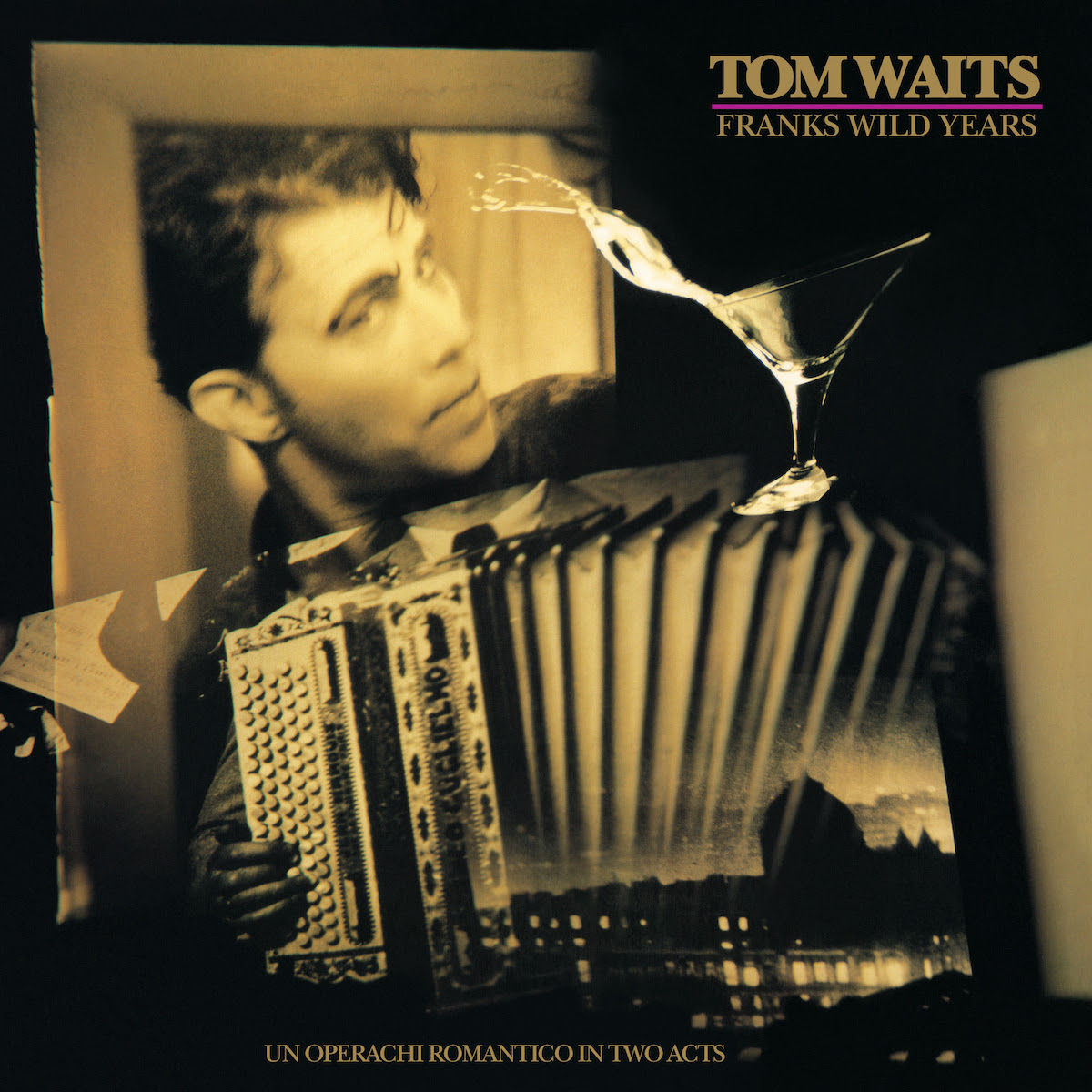
Franks Wild Years
Franks Wild Years the album is based on the Waits musical of the same name, performed with Waits in the lead role by Chicago’s Steppenwolf Theater (directed by Gary Sinise) during the summer of 1986. Recorded mostly in Hollywood, the idea for Franks came from the Swordfishtrombones spoken-word piece in which a used-furniture salesman (Frank), suffocating in middle-class existence with a “spent piece of used jet trash” wife and her blind Chihuahua, Carlos, burns down his house. With smoking rubble in his rear-view mirror, he hits the freeway with the parting quip, “Never could stand that dog.”
Waits and Brennan developed this into Frank as an accordion player escaping the mythical town of Rainville for a calamitous but noble journey to Las Vegas and New York, in search of stardom. In the end, broke and bewildered, Frank — “a guy who stepped in every bucket on the road,” as Waits put it — dreams his way back to Rainville, while freezing on a park bench in St. Louis. Until he suddenly wakes up and finds himself home in the saloon where it all started. Brennan christened it “un operachi romantico.”
While there is no opera in Franks, there is a hilarious touch of operatic styling by Waits himself in the song Temptation. His vocal character varies wildly throughout the work’s 17 songs, and is no more impressive than when the gruff, growly singer turns to impeccable Sinatra-esque phrasing on the Vegas number, Straight To The Top. While Franks featured a 14-member cast on stage, the album is all Waits — yet suggests a multitude of characters by virtue of his chameleon vocals. (One reason: the use of a DMP-5 Fannon transistorized bullhorn bought at Radio Shack for $29.95.) Acting in film, he said at the time, helped him to become a better vocal actor on songs.
Franks is lost dreams, bad dreams, dreams that might not even be dreams. The music is nightmarish, ethereal, beautiful. Think: broken calliopes played by genius children, horns played at dawn in a graveyard, banjos leaking through practice room walls. To call the orchestration improbable at this stage in Waits’ oeuvre is a given; what is remarkable is how it coheres, makes ambient musical sense. From the opening Hang On St. Christopher (“a Tarus Bulba number, kind of a tarantella,” said Waits) to the crackly old 78-rpm-esque version of Innocent When You Dream (“An Irish drinking song, sure to be a hit at Christmas”), Franks retains its mood. Among the instruments: The Optigan (a keyboard sold by J.C. Penney in the early ’70s), crowing rooster (played by Waits with obvious delight on I’ll Be Gone), clay pots, accordion (David Hidalgo), bass pedals (raised to chest level), bowed saw. Ralph Carney (uncle of Black Keys drummer Patrick Carney) plays three horns simultaneously on Way Down In The Hole.
Titles evoke Frank’s dime-store Odyssey: Straight To The Top, Blow Wind Blow, Temptation, I’ll Be Gone. The poetry is narrative where it needs to be (“I can’t let sorrow try and pull ol’ Frankie down / live for tomorrow I have found you”), shot through with delicious imagery (“There’s a ribbon in the willow and a tire swing rope / Oh, and a briar patch of berries takin’ over the slope”), downright funny (“Never trust a man in a blue trench coat / Never drive a car when you’re dead”), sometimes outré (“Tonight I’ll shave the mountain / I’ll cut the hearts from pharaohs / I pull the road off of the rise / Tear the memories from my eyes / In the morning I’ll be gone”). Anyone who can listen without moist eyes to Franks Theme or Innocent When You Dream should be prosecuted.
“It closes a chapter, I guess,” Waits said when Franks was released. “Somehow the three albums seem to go together. Frank took off in Swordfishtrombones, had a good time in Rain Dogs and he’s all grown up in Franks Wild Years.”
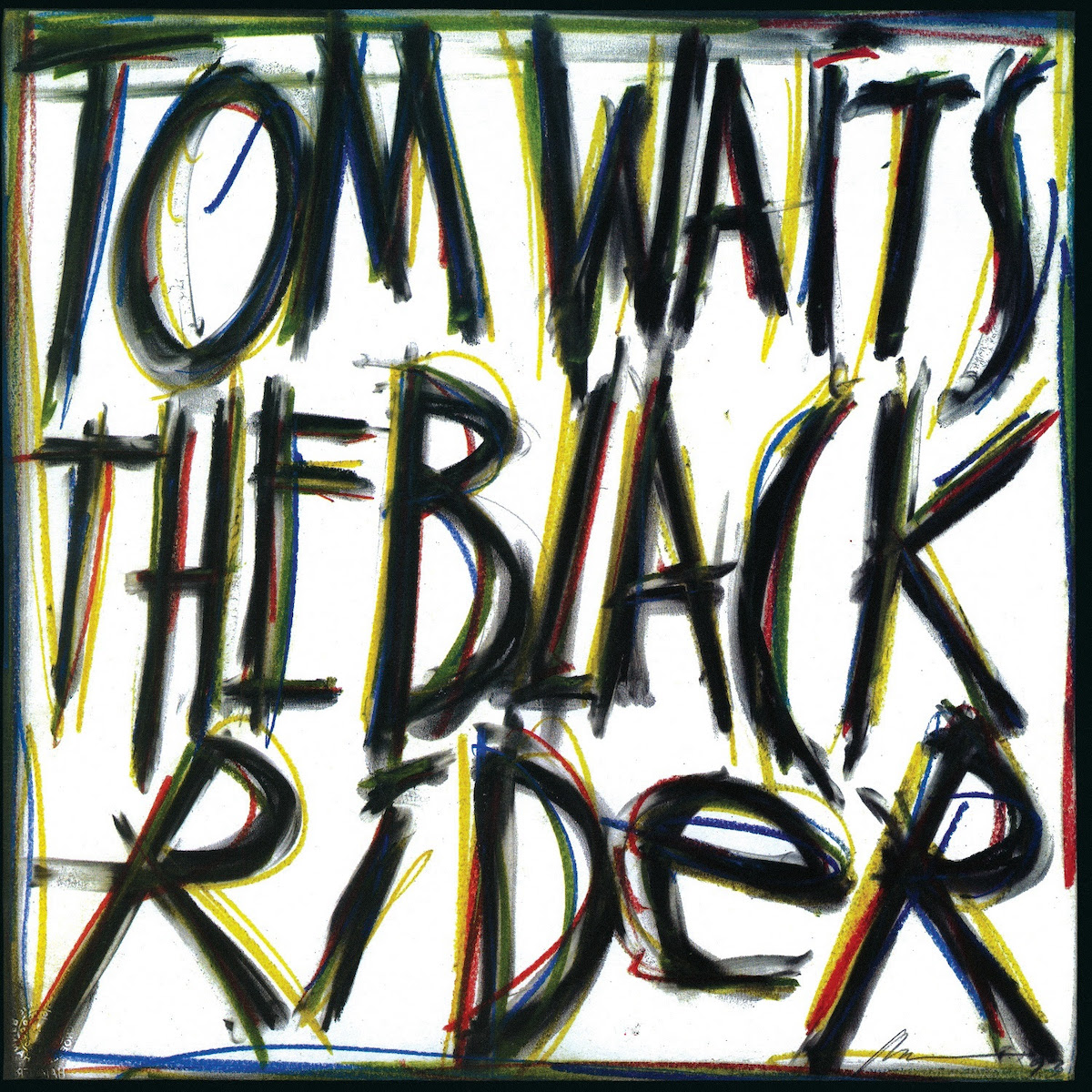
The Black Rider
The Black Rider, Waits’ next project after Franks, is an extraordinary melding of the art of three extraordinary persons: Waits, experimental director Robert Wilson and the late legendary writer William S. Burroughs. The music was written in 1988-89, recorded in ’89 and ’93, and the Waits album was released in ’93.
Based on the 19th-century German/Bohemian folk tale of a young clerk who makes a deal with the devil (Der Freischütz, famously an 1821 opera by Carl Maria Von Weber), The Black Rider is Waits at his most surreal, playful, musically gnarled. Think: 1929 Berlin cabaret meets Frankenstein if F.W. Murnau movie sets could sing. This two-and-a-half-hour musical fable (Wilson calls it an opera) premiered March 31, 1990, at the Thalia Theater in Hamburg, Germany, and is still part of standard repertory in Europe. Waits did not sing or appear in the production, which featured a cast of 11 (Marianne Faithful played “Pegleg” — the devil — in a 2004 Wilson world-touring revival), and has been extensively staged in the U.S., Canada and Australia.
Wilson — famed for staging the Philip Glass opera Einstein On the Beach — sought out Waits to write the Black Rider music and most of the lyrics. Burroughs contributed words to three songs, and wrote the book. Waits moved to Hamburg to compose in collaboration with his longtime bassist, the multi-instrumentalist Greg Cohen, and Gerd Bessler of The Music Factory studios. Explained Wilson in an interview: “I love to hear Tom Waits sing. His deep interior sense of music touches me and moves me deeply.” As for Waits, it was an offer he couldn’t refuse: “Wilson’s stage images,” he said at the time, “had allowed me to look through windows into a dusting beauty that changed my eyes and my ears permanently.”
The weird and madcap musical fruit of this venture was half recorded in Hamburg in ‘89, and half at Prairie Sun Recording Studios in Cotati, Calif. Critics seemed confused. The Black Rider is a nearly hour-long rabbit hole of grim narratives, hellacious carnival barking, fragile ballads, the eerie declamation of Burroughs poetry recited by both the author and Waits, and instrumentals. The “house band,” dubbed The Devil’s Rhubato, makes liberal use of horns, viola, cello, oddball keyboards, train whistle, contrabassoon, and sinister bass clarinet. The flavor of the music falls between the extremes of the poignant serenade, The Briar and the Rose, and Burroughs’ spooky Tain’t No Sin, which features a lyric that inspired Waits’ overall approach to the project:
“’Tain’t no sin to take off your skin / And dance around in your bones.”
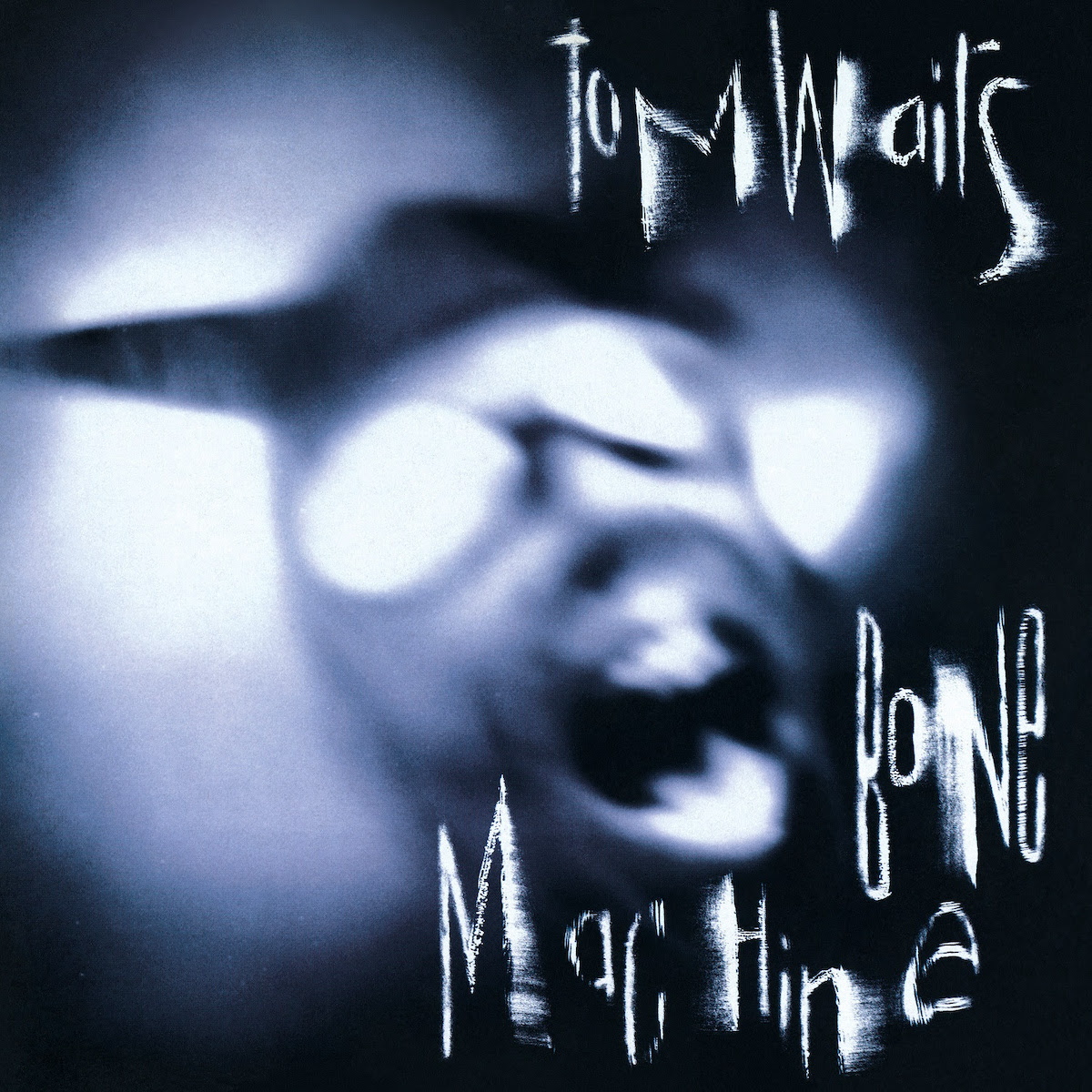
Bone Machine
Bone Machine was, to borrow a cliché, a smash — released in 1992 to universal critical acclaim, followed by a Grammy for Best Alternative Music Album. Waits co-wrote half of the album’s 16 works with Brennan, and special guests included David Hidalgo, Les Claypool (bass) and Keith Richards (who co-wrote That Feel.)
Recorded in Prairie Sun Studios in Cotati, Calif. — described by Waits as “just a cement floor and a hot water heater” — the album was a radical redesign of Waits’ soundscapes and writing technique. The songs weren’t composed — they sound more forged, hammered, chiseled, bent. Waits and Brennan seem to have conjured the record out of dirt, cracked pavement, broken tree branches, and bird song. Their move to a rural area of Northern California heavily influenced the ideas and music of the record.
Bone Machine is a sound-sculpture of clattering sticks, rusted farm equipment, choking demons, newspaper clippings, thundering stomps, Biblical myths, phantoms, marching skeletons, madmen, murders, lost friends, little kids, and a little rain. It is a clutch of prayers and short stories and protests and tragedies. The music grabs you by the collar, shakes you around, strokes your head, drops you in a ditch, laughs up its sleeve, tickles, bitches, and comforts. There is righteous indignation (“The bald headed senators / Are splashing in the blood”) and world weariness (“I’m not all I thought I’d be / I always stayed around”) and devastating journalism (“She was 15 years old / And never seen the ocean / She climbed into a van / With a vagabond / And the last thing she said / was ‘I love you mom’ ”)
Waits called the songs on Bone Machine “little movies for the ears.” He sometimes wrote them entirely from a percussion pattern, which he played on an array of largely homemade instruments. One, the “conundrum,” was essentially a large iron crucifix with crowbars and found metal objects hanging off of it. As Tom explained at the time, “I have a lot of very strong rhythmic impulses, but this is not my world. I just pick something up and I hit it, and if I like the sound, it goes on. Sometimes my idiot approach serves the music.”
Mortality is a recurrent theme, from Dirt In The Ground (“We’re all gonna be…”) to All Stripped Down, The Ocean Doesn’t Want Me (a tale of contemplated suicide), Jesus Gonna Be Here, the rambunctious paean to childhood I Don’t Wanna Grow Up, and certainly the broken-hearted, confessional classic ballad Whistle Down The Wind, which was beautifully covered by Joan Baez on her titular 2018 album. Waits explained at the time: “Yeah, ultimately, it will be a subject that you deal with. Some deal with it earlier than others, but it will be dealt with. Eventually we’ll all have to line up and kiss the devil’s arse.”
The press wrote that this was Waits’ first album in five years, but in point of fact, he had been extremely busy since Franks Wild Years with many projects, large and small — from writing and half-recording The Black Rider to the evocative, mostly-instrumental album soundtrack to Jim Jarmusch’s film, Night on Earth (1992). Bone Machine further established Tom as one of the most inventive and prolific artists of our time, and presaged even more daring music to come.


